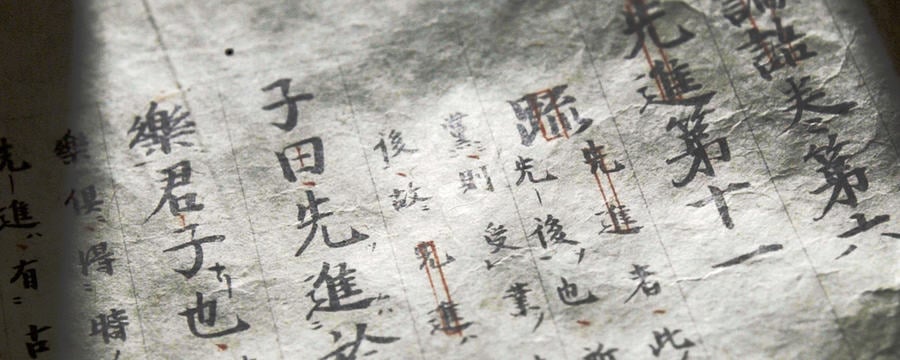Home / History / Social History / Sino-Japanese Interactions Through Rare Books / The Analects as a book for the masses
This article is from the free online
Sino-Japanese Interactions Through Rare Books


Reach your personal and professional goals
Unlock access to hundreds of expert online courses and degrees from top universities and educators to gain accredited qualifications and professional CV-building certificates.
Join over 18 million learners to launch, switch or build upon your career, all at your own pace, across a wide range of topic areas.

 Fig.1 Doshun-ten Rongo『道春点論語』
Fig.1 Doshun-ten Rongo『道春点論語』 Fig.2 Goto-ten Rongo 『後藤点論語』
Fig.2 Goto-ten Rongo 『後藤点論語』 Fig.3 Ansai-ten Rongo 『闇斎点論語』
Fig.3 Ansai-ten Rongo 『闇斎点論語』 Fig.4 Issai-ten Rongo 『一斎点論語』
Fig.4 Issai-ten Rongo 『一斎点論語』 Fig.5 Kyoritu-ten Rongo (Toyama domain) 『藩版論語』富山藩
Fig.5 Kyoritu-ten Rongo (Toyama domain) 『藩版論語』富山藩





